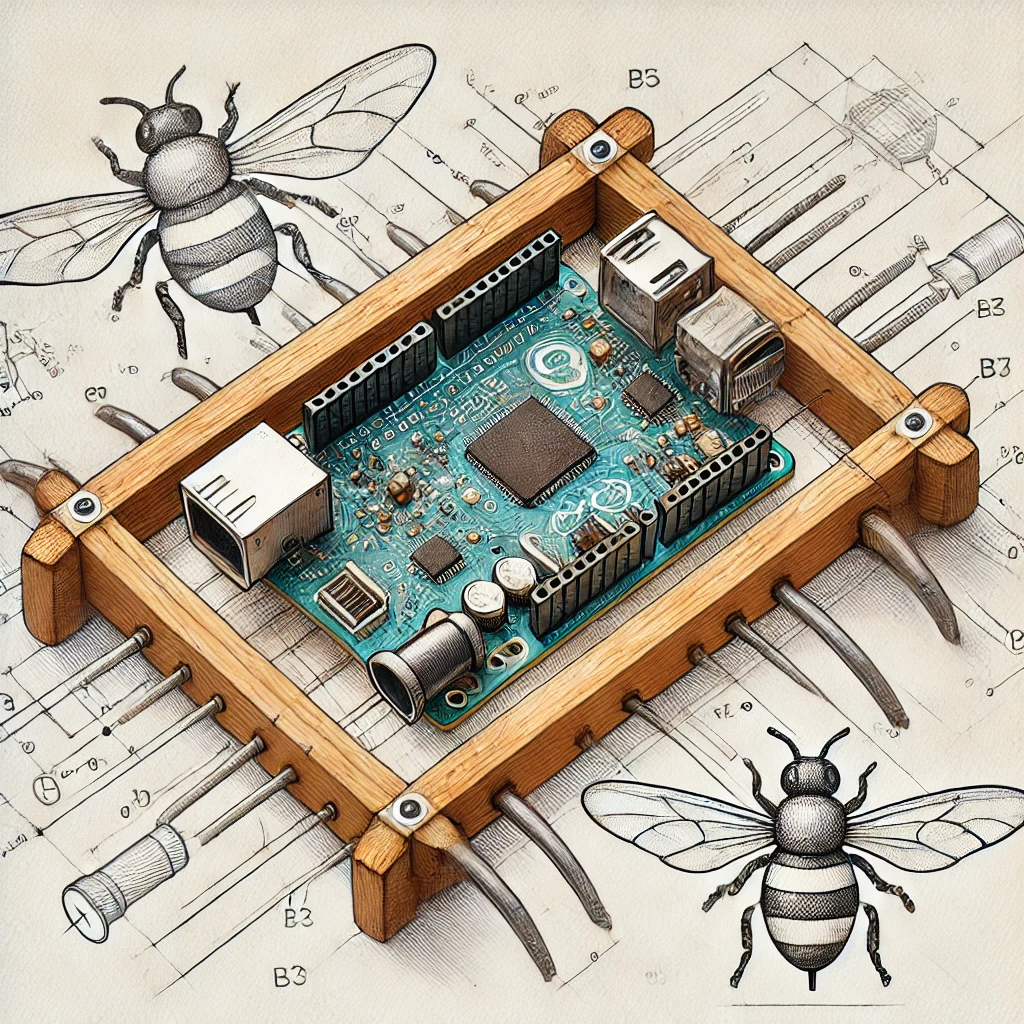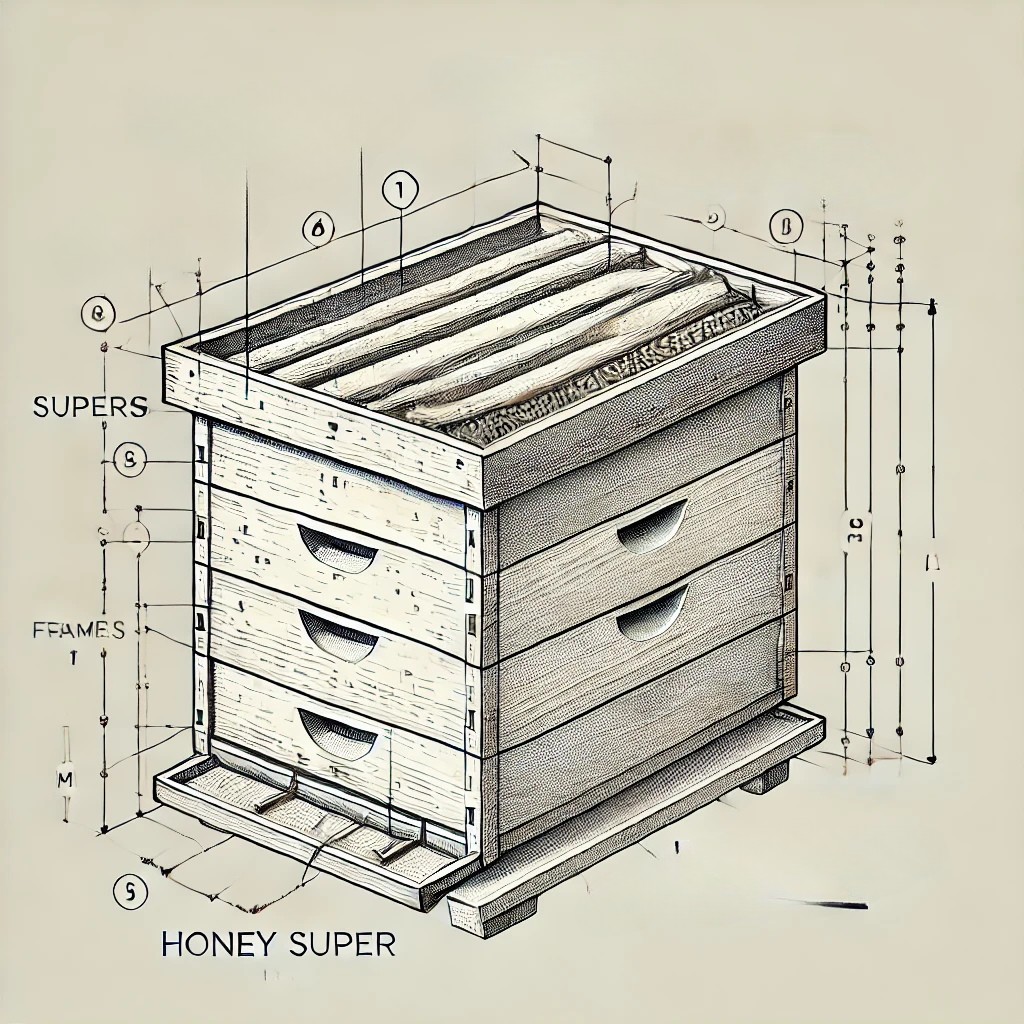
A Tech Experiment to Solve Colony Collapse Disorder
Colony Collapse Disorder (CCD) is a phenomenon where entire bee colonies mysteriously abandon their hive, leaving behind honey, brood (developing bees), and even the queen!
Building a Smart Beehive
To track what was happening inside the hive before CCD struck, I needed a system that could monitor environmental and hive conditions in real time. My custom-built hive computer logged data every five minutes and transmitted it to a central server for analysis.
Sensors & Data Collection
The system monitored multiple factors that could influence bee health and behavior:
- Gas Sensors: CO₂, carbon monoxide, and other airborne chemicals (using a sensor similar to the Bosch BME688)
- Temperature Sensors: Inside and outside the hive
- Barometric Pressure: Atmospheric pressure changes, which directly impact bee behavior
- Humidity Levels: Tracking hive moisture levels
- Audio Monitoring: Since bees communicate through frequencies and vibrations, I recorded audio to analyze behavioral shifts
- Hive Weight Monitoring: Tracking food intake, colony growth, and potential hive absconding
Each of these factors was logged and backed up to a remote server for long-term analysis, helping me look for correlations between hive conditions and potential colony collapse triggers.


Why Gas Monitoring Matters in a Beehive
Bees Breathe Too: The Impact of CO₂ and Other Gases
Like all living creatures, bees exhale carbon dioxide (CO₂) as they breathe. In a healthy hive, bees manage airflow naturally through fanning, but if CO₂ levels rise too high, it can affect their behavior, stress levels, and even survival.
Key Gases to Monitor in the Hive:
- Carbon Dioxide (CO₂): High levels can make bees sluggish or trigger an evacuation response.
- Carbon Monoxide (CO): Even small traces can be deadly, and it can come from external sources like nearby vehicles, machinery, or faulty beekeeping equipment.
- Natural Gas & Other Airborne Chemicals: External leaks or environmental pollutants could be affecting hive health.
By tracking these gases, I wanted to see if air quality changes correlated with colony stress or if sudden shifts in CO₂ levels could predict CCD events.
The Importance of Proper Hive Ventilation
Beekeepers often underestimate the role of ventilation in hive health. Without proper airflow, a hive can develop:
🚨 Excessive Moisture: Leading to mold, fungus, and weakened bees.
🚨 CO₂ Buildup: If bees can’t remove exhaled gases quickly enough, their environment can become toxic.
🚨 Temperature Instability: Poor ventilation can trap heat in summer or make hives colder in winter.
Proper ventilation ensures optimal gas exchange, helping bees regulate their environment without stress or excessive energy use.
Why Barometric Pressure Matters for Bees
Many people don’t realize that bees are highly sensitive to barometric pressure changes. When the pressure drops, bees become more defensive, agitated, and far more likely to swarm. Sudden shifts in pressure can disrupt their natural routines, causing changes in foraging, hive activity, and even decision-making within the colony.
By tracking pressure fluctuations over time, I hoped to see if sudden changes correlated with hive stress or a lead-up to CCD. If barometric pressure was a factor in their decision to abandon a hive, it could provide valuable insight into one of the many unknowns surrounding colony collapse.
Why Hive Temperature Is Critical
A honeybee colony is a precision-controlled environment, and bees actively regulate their hive temperature year-round.
- The ideal hive temperature is 93-97°F (34-36°C), which is crucial for proper brood development.
- If the hive gets too cold, the brood (bee larvae) can die or develop abnormally.
- If the hive gets too hot, bees will abandon brood care to fan and cool the hive, leading to reduced productivity.
🚨 Cold Weather Hive Openings = Hours of Recovery 🚨
If you remove a hive lid in 40°F (4°C) weather for just 15 seconds, it takes the hive approximately 3 hours to return to a stable temperature. This was a huge takeaway—not only for my project but for beekeeping in general. Unless it’s an emergency, avoid opening your hive in cold temperatures!
Why Hive Weight Matters
Hive weight is one of the most underrated metrics when it comes to monitoring bee colony health. By placing the hive on a load cell scale, I was able to track:
📈 Nectar & Honey Storage: An increase in weight usually means bees are bringing in nectar and building honey stores.
📉 Food Consumption & Starvation Risk: A steady weight drop over time could indicate food shortages.
🐝 Colony Growth & Strength: As a hive expands, more bees hatch, increasing the overall weight.
🚨 Swarming or Abandonment: A sudden weight drop could indicate a swarm or the beginnings of CCD.
Final Thoughts: Tech + Nature = Unexpected Discoveries
This project was a mix of network engineering, sensor monitoring, and a bit of obsession with solving the unsolvable. It proved to me that sometimes the best way to investigate a mystery is to build something wild and let the data speak for itself.
Would I do it again? Absolutely.
What’s next? Maybe a real-time AI monitoring system for hive health. But that’s a story for another day.
Have ideas on how to analyze this data further? Let me know!
🐝💻 #BeeTech #ColonyCollapse #TechForNature

